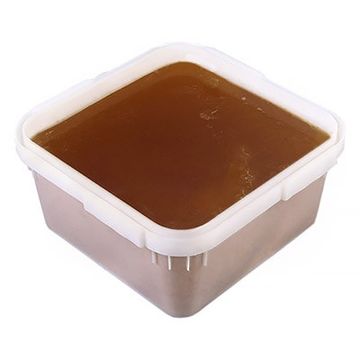Altai honey with a uterus

+7 (961) 993-26-19
- Cup container 15, 33 kilos
- Plastic buckets 1.5, 3, 4.5 kilos
Ingredients: natural honey, uterine uterus extract.
Plant extracts are obtained by low-temperature technologies, allowing to fully extract and preserve the biologically active substances of plants. The product is made on the basis of high-quality Altai honey. The combination of extracts with natural honey doubles the strength and improves the availability of biologically active substances for the body, which allows to achieve the maximum healing effect.
Borovaya uterus - the popular name for the healing plant Ortilia is one-sided, growing in the wild in the forests of Siberia and Altai. The plant blooms in late spring - early summer. Outwardly, “female grass” is similar to a lily of the valley. The word "pine forest" means "forest", growing in forests.
Since ancient times, the plant has been used in folk medicine to get rid of female diseases. Decoctions and tinctures from it have medicinal properties:
Diuretics.
Painkillers.
Antimicrobial.
Anti-inflammatory.
Antitumor.
Its positive effect on the genitourinary sphere allows it to be used to treat "male" diseases: prostatitis, prostate adenomas.
And today, "female grass" is used to treat such gynecological diseases:
infertility;
uterine fibroids;
polycystic ovary;
polyps;
cystitis;
pyelonephritis;
menstrual irregularities.
Providing anti-inflammatory and analgesic effects, the boron uterus heals female organs and the gastrointestinal tract. At the same time, healing and rejuvenation of the whole organism, the cardiovascular system occurs.
But when choosing this plant for treatment, we must not forget that it affects blood coagulability and changes the hormonal background. Therefore, before proceeding with treatment, it is mandatory to consult a doctor and check for hormones and blood coagulation.
Composition of honey with a uterus
It contains the following rare substances:
Flavonoids.
Quinone.
Phytoestrogen and - progesterone.
Arbutin and methylarbutin.
Coumarin.
Acids (tartaric, citric).



























